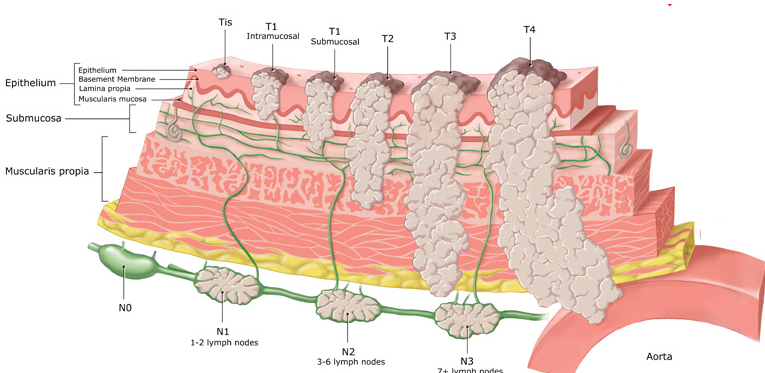Cancer Staging and Grading Systems
Understanding the Labyrinth: Cancer Grading and Staging Schemes
It can be very daunting to receive a cancer diagnosis, and knowing how serious the condition is will help you make well-informed treatment choices. Systems for staging and grading cancer can be useful in this situation. These systems offer a standardised method for classifying cancer according to its aggressiveness and severity.
Table of Contents

Taking a closer look: What Is Cancer Staging?
Cancer Staging and Grading Systems
The term “cancer staging” refers to the degree of internal cancer spread. It takes into account things like:
- Tumour location and size: This refers to the extent of the main tumor’s invasion of neighbouring tissues as well as its size.
- Involvement of lymph nodes: Cancer can spread to lymph nodes initially since they are a component of the immune system. The staging process takes into account the quantity and presence of cancerous cells in the lymph nodes.
The term “distant metastasis” describes the spread of cancer cells to organs other than their original site.
The TNM system is the staging system that is most frequently utilised.
Cancer Staging and Grading Systems
- T: Denotes a tumour. It provides details about the original tumor’s dimensions. Greater tumour size or advanced stage is indicated by higher “T” stages.
- N: Denotes nodes. It explains involvement of the lymph nodes. Greater numbers of afflicted lymph nodes are indicated by higher “N” stages.
- M: is an acronym for metastasis. It shows whether distant organs have been affected by the cancer. While M1 denotes the presence of metastases, M0 denotes the absence of metastases.
Grouping Stages: A numerical stage, usually represented by Roman numerals, is allocated based on the TNM information. The stages normally range from Stage I, which is early-stage cancer, to Stage IV, which is advanced-stage cancer with distant metastases.
Knowing the stage of cancer aids physicians in:
Cancer Staging and Grading Systems
- Create a plan for treatment: While advanced stages of cancer may need a combination of surgery, chemotherapy, and/or radiation therapy, early-stage malignancies may be treated with surgery alone.
- Estimate the prognosis: An estimation of the patient’s possible prognosis and survival rates can be obtained from the stage.
- Compare available treatments: Stage makes it easier to examine how well various treatment approaches work for tumours with comparable stages.
But it’s crucial to keep in mind that staging is only one component of the whole. Treatment choices are also influenced by other variables, such as the patient’s age, general health, and the particular form of cancer.
Deciphering Cancer Grading: Beyond Size and Spread
Cancer Staging and Grading Systems
Under a microscope, the look and behaviour of cancer cells are the main factors considered in cancer grading. It evaluates the abnormality of the cells as well as their propensity to proliferate and spread fast.
Cancer types vary in their grading systems, but generally speaking, they fall into one of the following categories:
- Grade 1 (Low Grade): Slow growth is suggested by the cells’ closest resemblance to normal cells.
- Grade 2 (Intermediate Grade): Compared to Grade 1, there are more anomalies in the cells, suggesting a possible higher pace of growth.
- Grade 3 (High Grade): The very atypical appearance of the cells suggests aggressive growth that has a high potential for spreading.
- Grade 4 (Highest Grade): The cells show the most notable abnormalities, which point to the fastest rate of growth and greatest potential for dissemination.
Knowing grade is beneficial to doctors:
Cancer Staging and Grading Systems
- Predict the behaviour of cancer: Higher grades are indicative of a more aggressive cancer that is more likely to spread.
- Help guide treatment decisions: More intensive therapy may be needed for aggressive tumours.
- Estimate treatment response: Different grades may react differently to different treatments.
- It’s crucial to remember that stage determines more than grade alone. But when paired with stage details, it paints a more complete picture of the cancer.
Using a Single Method: Combining Staging and Grading Combined
Cancer Staging and Grading Systems
Together, staging and grading schemes help to provide a more comprehensive picture of a patient’s cancer. Physicians who have a thorough understanding of both can create a treatment plan that is more individualised and meets the needs of the patient.
Cancer Staging and Grading Systems
Here’s a comparison: Consider a home. The extent and spread of the fire (cancer) are described by the stage. A minor fire in a single room could indicate an early stage of localised cancer, whereas a major fire consuming several rooms could indicate an advanced stage of cancer with metastases. Grading, on the other hand, provides information about the fire’s severity. A high-grade fire would spread quickly and call for rapid attention, whereas a low-grade fire would burn slowly and be easier to put out (slow-growing cancer).
Doctors can decide the best line of action to put out the fire (treat the cancer) by combining this information.
Recall that power comes from knowledge.
Cancer Staging and Grading Systems
Even though cancer grading and staging systems can be complicated, being aware of them gives you the ability to actively engage in your healthcare process. Never be afraid to question your doctor to clarify the exact cancer stage and grade you have, as well as how they affect your available treatment options. You may feel more informed and invested in your treatment approach with this knowledge.


